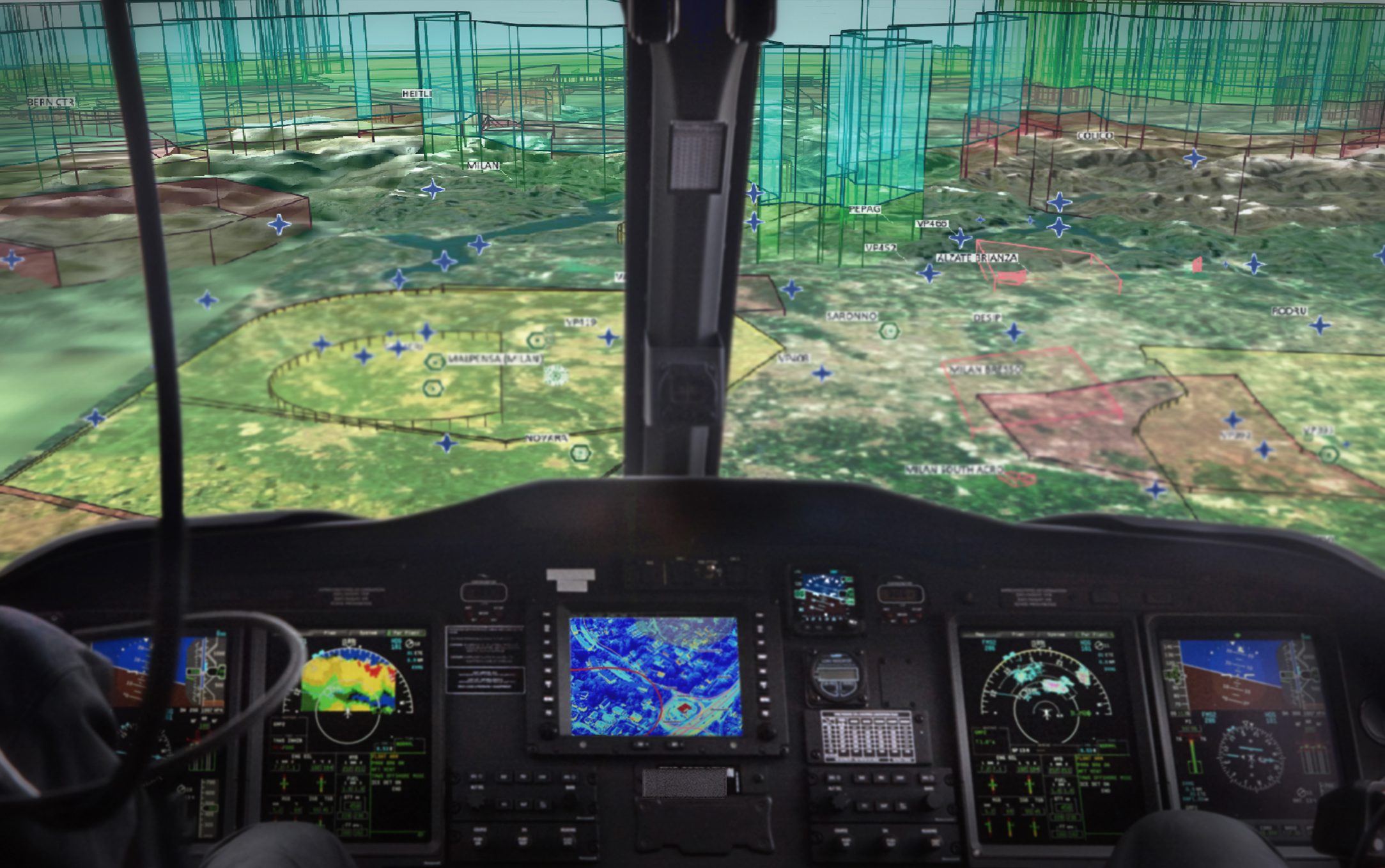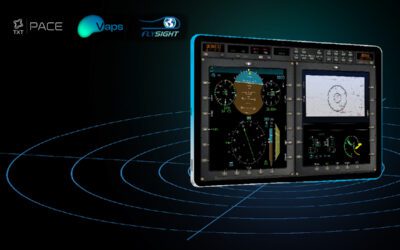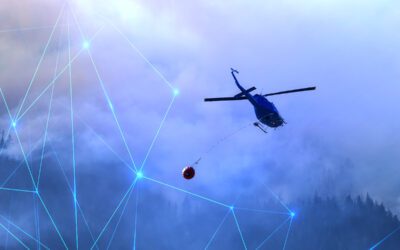While there are some similarities between a fixed-wing aircraft control system and a helicopter flight control system, there are also some key differences. Helicopters have a reputation for being notoriously difficult to fly, and the controls are complex and time-consuming to master.
However, once you understand the basic principles of helicopter avionics, it makes perfect sense. This article will explain the key features of a helicopter flight control system, what each section does, and how they interact with one another.
We will also examine additional consoles that can be integrated using modular units to make flying a rotary aircraft more intuitive. We will also examine how Augmented Reality plays a major role in modern aircraft operations.
What is a helicopter flight control system?
A helicopter flight control system is exactly what it says—the operating system for flying a rotary aircraft, which actually consists of several separate systems. Using a combination of different elements, the flight control system allows a single pilot to operate the vehicle (although, in very large rotary aircraft such as Chinook helicopters, a co-pilot assists the pilot due to the additional complexities involved in flying a larger craft.)
The Cyclic control system
Also abbreviated to ‘the cyclic’ or the ‘stick’, this is the most fundamental aspect of the flight system. It is also one of the most instantly recognisable elements in a helicopter flight control system and is quite literally a ‘stick’ either in front of the pilot or positioned between the pilot and co-pilot. The cyclic controls the altitude and air speed of the helicopter by altering the tilt of the rotor disc. This is the disc shape that the rotors make as they rotate.
By moving the cyclic forward, the nose of the aircraft dips, causing the aircraft to increase in speed but then descend to a lower level. If the cyclic is pulled back, the nose of the fuselage will rise, causing the aircraft to climb but slowing its speed. Lateral movement to the left or right changes the helicopter’s direction on a flat plane.
Collective pitch control
Also known a little confusingly as the ‘lever’, the collective also works to control the aircraft’s height by altering the pitch of all the rotor blades simultaneously. It is a twist-grip throttle system used to raise or descend the aircraft.
In modern helicopters, an electronic governor automatically senses the position of the collective. It then automatically activates the throttle, which takes one job out of the pilot’s hands and allows them to focus on other elements of this complex operation.
The Yaw pedals
Also known as anti-torque pedals, these two pedals are located on the floor of the pilot’s area and turn the nose of the aircraft to the right or left. They are similar to the rudder peddles in a fixed-wing aircraft. However, in a helicopter, they change the pitch of the tail rotor blade to increase or decrease thrust and make the nose yaw in the specified direction.
For aircraft that have ditched the tail rotor in favour of a NOTAR air stream system, the controls change the air stream within the fuselage to create the same effect.
Those are the three main control elements. Modern aircraft also have additional systems to aid operation, such as HUD or Heads Up Display systems, which provide instant information on the aircraft’s position and wind speed without the pilot having to visually scan a bank of dials.
Auxiliary controls
Behind the pilot’s seat are banks of auxiliary controls that are operated by other members of the crew. In aircraft involved in Search & Rescue, reconnaissance for military or law enforcement, or even traffic monitoring, these controls provide information on the environmental factors, the terrain, and other information.
In an aircraft that incorporates Augmented Reality modules into its operating system, this information can be immediately relayed to the pilot’s HUD or a tablet to provide them with essential details on everything from search patterns to the location of overhead cables and potentially dangerous terrain.
Helicopter flight controls in action
It’s not enough to know what each part of the system is on its own – the skill in flying a rotary aircraft is to understand how all of these different elements work together. An additional reason for this is that all of the controls on a helicopter control system have what are known as secondary effects. So moving the cyclic forward won’t just dip the nose and increase the speed, but it will also start to descend. To counter that, you would need to raise the collective slightly. Failing to do so would mean the aircraft could go into a nose-dive.
However, raising the collective to keep the speed up could also cause the aircraft to yaw to the right, so you would need to activate the left pedal to keep the flight path level. So, rather than activating one part of the system at a time, all elements must be effectively juggled and balanced to keep the aircraft going in the right direction and at the right speed.
It is this that makes flying a helicopter so challenging. It’s a bit like rubbing your head and patting your stomach at the same time while hopping up and down on one leg. It is also why training helicopter pilots takes longer and involves much more time in a simulator so trainees can get their coordination fine-tuned before taking to the air.
Critical differences between helicopter and aeroplane flight controls
Helicopters and fixed-wing aircraft use different systems to control lift generation and stability. To control each of these, they both have different controls. Regarding lift generation, helicopters use rotor blades to generate both lift and propulsion.
Aeroplanes have fixed wings that depend on the amount of air flowing over the hydrofoil shape of the wing to generate lift. Whereas helicopters can create lift from a static position, aircraft need forward momentum to get the air flowing over the wings to create lift.
Stability is a different issue. Helicopters are inherently unstable and must be controlled using yaw pedals that control the tail rotor or anti-torque system. This stops the body of the helicopter from wanting to spin rather than move forward.
Aircraft are more stable and can maintain a balanced position with less input from the pilot once all the yoke and rudder paddles are in a neutral position.
Making life easier for pilots
With so much to consider regarding the basics of flight control, anything that makes life easier for the operator has to be welcomed. With systems such as the innovative OPENSIGHT modular system, sensor operators can gather a vast array of additional data using intuitive equipment.
This information can then be relayed to the pilot via a monitor or tablet, giving them at-a-glance information on everything from weather conditions to Lidar and radar sensor information in real time. Even street names and building identifications can be overlayed on a 3D map, which is particularly useful in urban SAR or surveillance operations.
Geospatial software can be used in so many different ways that each package can be specifically customised to the user’s requirements.
By creating a PED or Processing, Exploitation and Dissemination system, decision-making can be based on live mission data analysis. And because the modular system is incredibly compact and easily grandfathered onto existing operating systems, it doesn’t require hours of additional training for the operators – a significant consideration for crews already working on exceptionally complex helicopter flight systems.
OPENSIGHT has been developed to STANAG guidelines and rules, making it fully compliant and ready to go straight out of the box.
You can learn more about OPENSIGHT online and the systems offered by FlySight to augment your helicopter operations. Contact our team for more information today.





